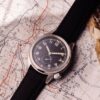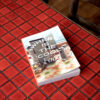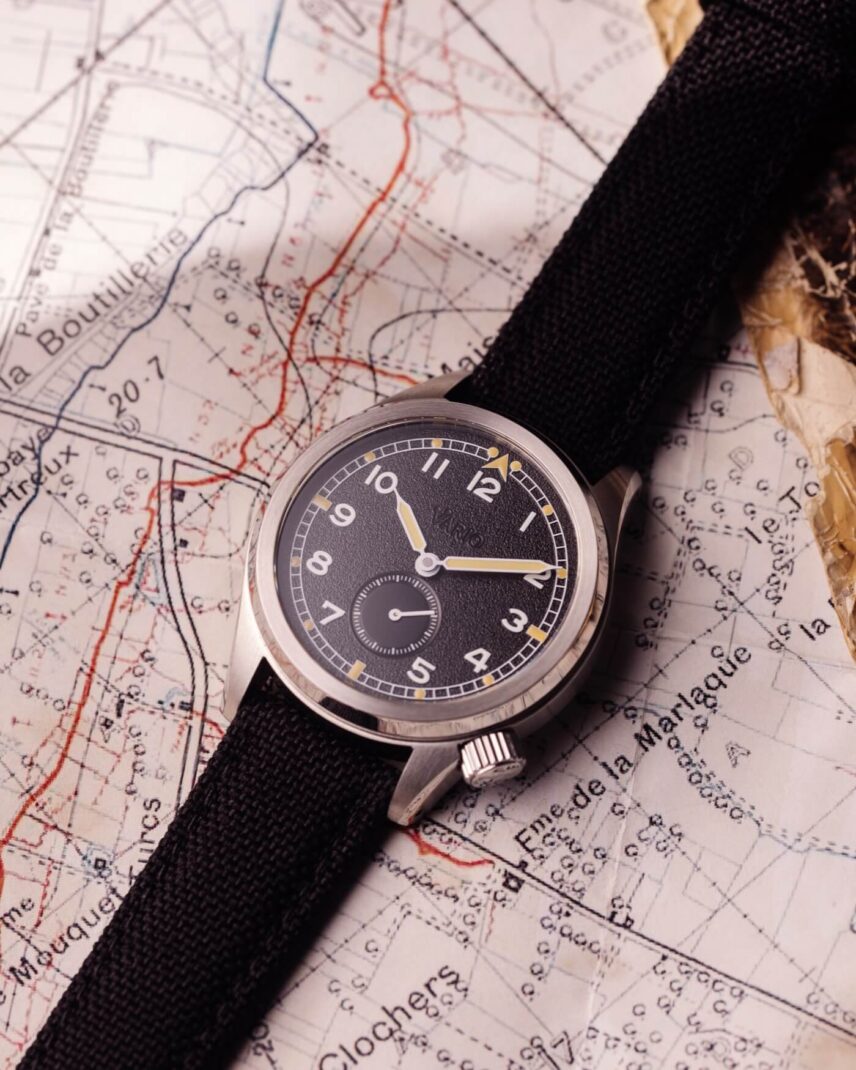A watch is more than a tool to tell time—it’s a companion to our rituals and a marker of beginnings. For Ivan Chua, founder of Vario, that connection began with a family tradition of new school-year timepieces that defined his childhood.
From those early memories to rediscovering the joy of wearing a watch after years of relying on a phone, his journey shaped the spirit of Vario. What started with designing straps grew into a watchmaking philosophy rooted in small but meaningful details: crowns placed for comfort, discs instead of seconds hands, and dials inspired by forgotten eras of design. Along the way came struggles, breakthroughs, and rewarding moments.
In this Brand Talks interview, Ivan shares how a side project became a now established microbrand, and why every piece he designs carries both history and imagination.
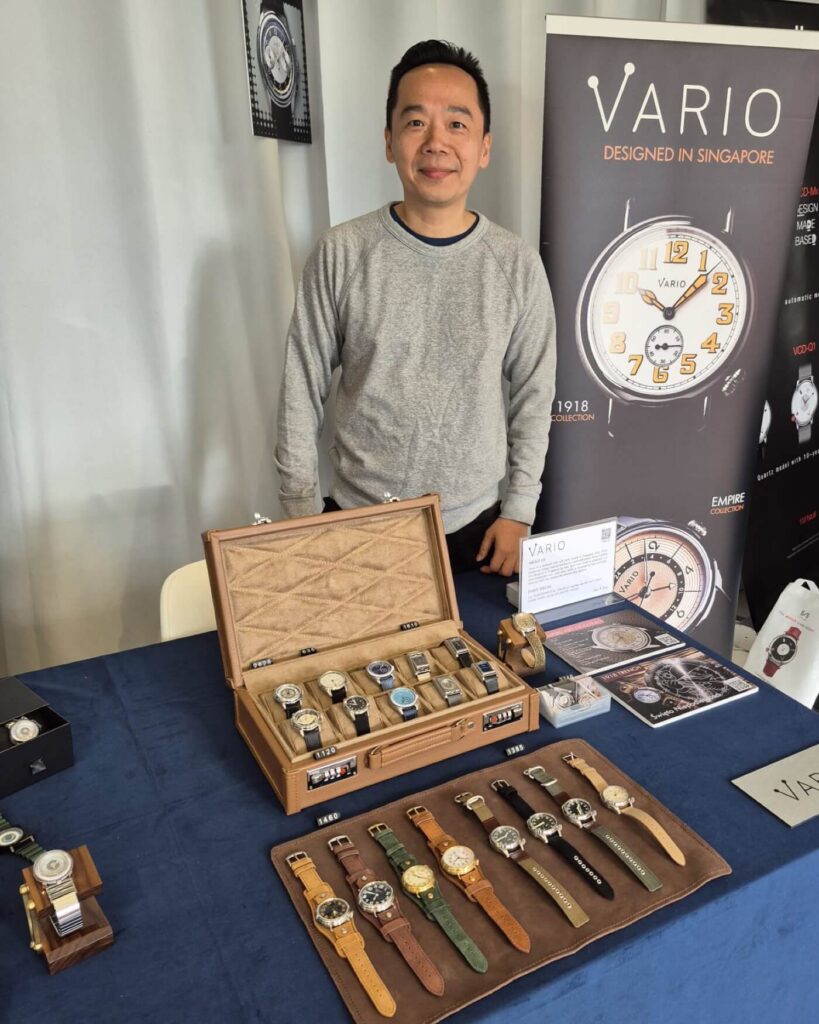
Before Vario was even an idea, what first drew you into the world of watches—and what’s the earliest memory you have of feeling that connection?
I can actually trace it back to when I was really young—maybe four or five years old—because I had a Mickey Mouse watch that I loved. Later, as a teenager, my dad would take me shopping every year before school started. That tradition comes from Chinese culture, where for the New Year you’re supposed to wear something new from head to toe. It symbolizes a fresh start. My dad extended that idea into the school year too: new shoes, a new bag, a new uniform, and a new watch.
How has your relation with watches evolved over time, and how did this lead to the creation of Vario?
Fast forward to my 20s: I wore a Baby G for a while, and then I just stopped wearing watches altogether because, like everyone else, I had a mobile phone. For almost 20 years, I didn’t think much about it. But by around 2016, I started feeling “phone fatigue.” Every time I took out my phone to check the time, I’d get sucked into messages and social media, and suddenly half an hour would disappear. I missed the simplicity of just wearing a watch.
So I dug out the old watches I still had—a Baby G and another one my dad had bought me on a trip to Australia. They worked fine after a battery change, but the straps had disintegrated. Since I’m a designer, I thought: why not try making straps? I designed a few graphic straps, put them on a crowdfunding platform, and to my surprise, the campaign succeeded. That was the beginning of Vario.
When I shipped the straps out, customers would send me photos of their pairings—Seiko SKXs, Hamilton Khakis, things like that. I started researching those models, and that’s when I fell down the rabbit hole of mechanical watches. My first proper mechanical piece was a Seiko SKX007, but I was also really drawn to vintage styles. I loved the Junghans Max Bill, but it was far too expensive for me at the time. So I set myself a challenge: make my own “poor man’s” version for around $300.
That became Vario’s first watch project. To be honest, it barely made it over the finish line—about 50 backers on Indiegogo. I remember telling my wife how stressful it was, and even wondering if maybe I should just give up. But I didn’t.
Less than a year later, I launched the Empire, and that one got around 150 backers. It gave me hope. By the time I launched the Trench Watch, we had over 600 backers. That was the turning point—proof that we could fund and grow the brand without relying only on crowdfunding.
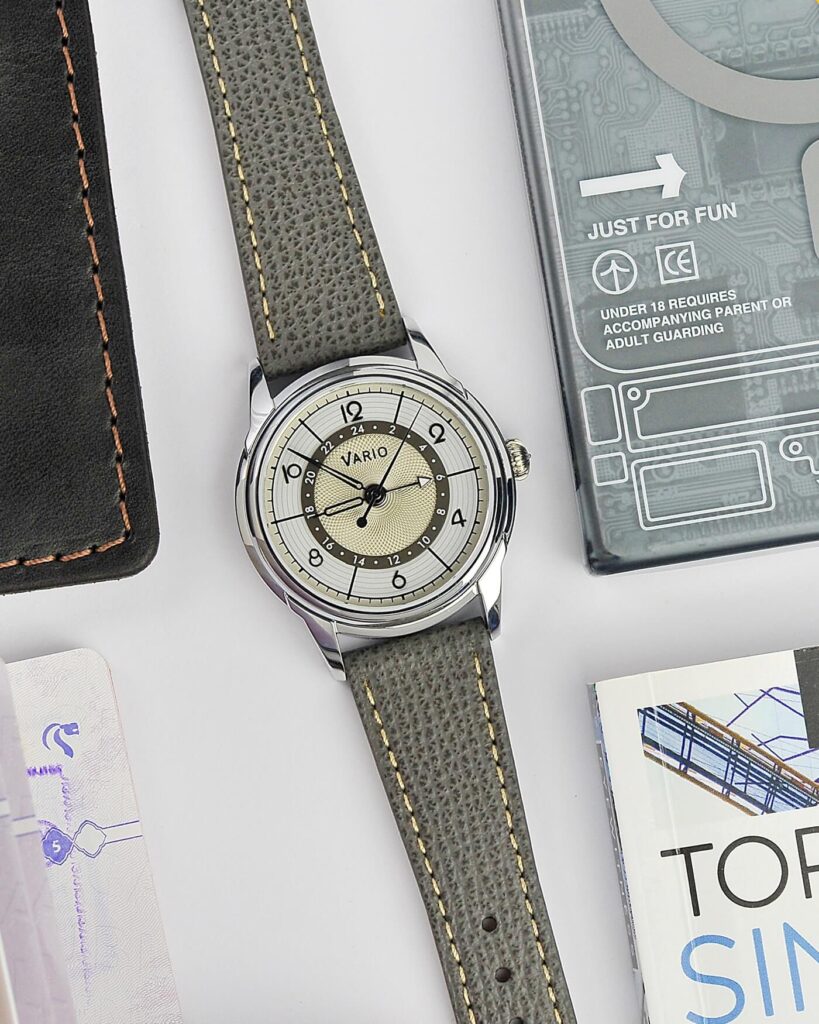
How does your background in design influence the way you think of watches?
I’ve always believed that innovation doesn’t have to mean reinventing everything. It can come from the technical side or from design. Since I’m not an engineer, my focus has naturally been on design—and finding small but meaningful ways to improve how people experience a watch.
For example, with our A11S, I realized a lot of consumers don’t like the ticking seconds hand on quartz watches. At the same time, they still want a way to see that the watch is running. My solution was to replace the second hand with a small disc and dot. If you look closely, you can still see it moving, but it avoids that constant tick people dislike. It’s a subtle tweak, but it changes the whole feel.
Another example is the NAVI, which was inspired by sailing and nautical instruments. I challenged myself to think differently about how we tell time. Instead of numbers on the dial, I looked at old steam engine gauges where you’d see “slow” and “fast.” I thought, why not use words instead of numbers to mark the hours? It felt fresh but still rooted in history.
Even when I work with very classic designs, I like to put my own spin on them. Take the Trench, for example—it’s a vintage-inspired piece, but I placed the crown at 4 o’clock. That’s something you usually see on modern military watches because it doesn’t dig into the wrist. It’s a small detail, but it makes the watch more wearable today while still honoring the original design.
For me, those kinds of choices—small updates that respect tradition but bring something new—are what shape Vario’s approach to watchmaking.
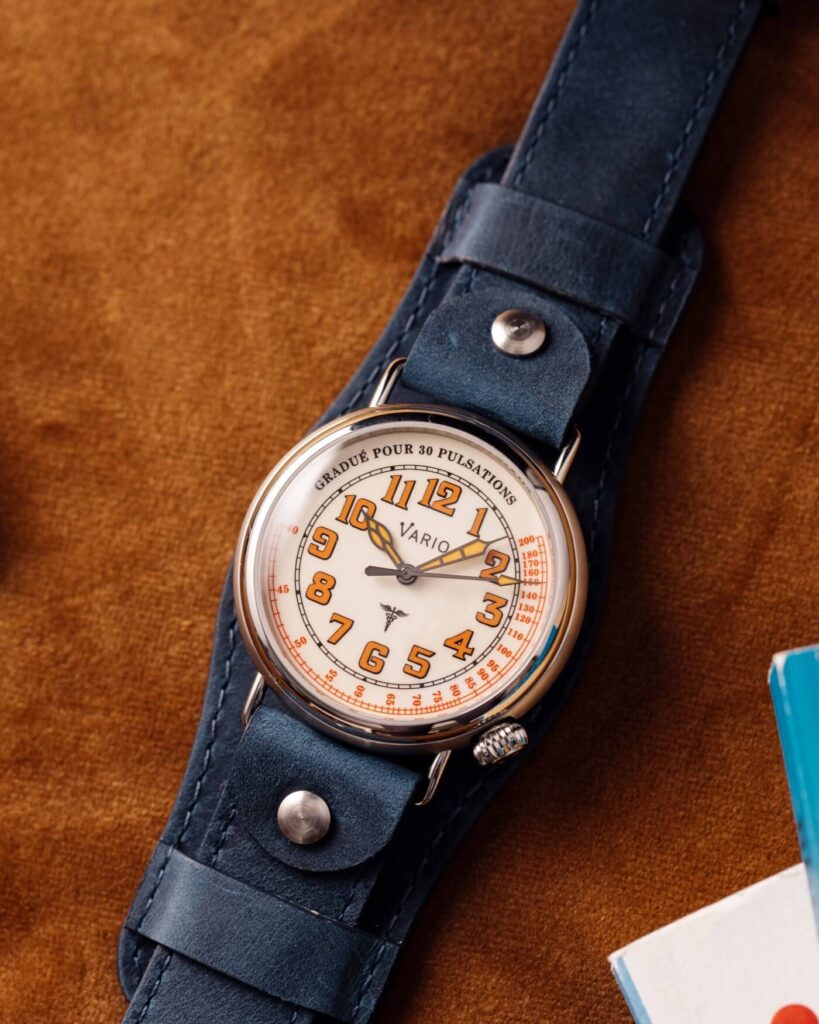
Could you tell us more about how you found the name and what identity you intended for the brand from the start?
The mission from the start was to encourage people to vary what they wear—to switch things up. You might wear a pilot watch today, a diver tomorrow, a dress watch the next day. I wanted to inspire people to explore different types of watches rather than sticking to just one. That word “vary” stuck with me.
At the same time, I wanted something short and catchy. I thought of “Oreo”—everyone remembers it, it rolls off the tongue. So I combined the idea of “vary” with that kind of catchy rhythm, and “Vario” was born.
Most of your designs are vintage-inspired. Is there a particular vintage watch—or story about one—that captured your imagination and stayed with you?
Personally, I’ve always been drawn to vintage watches, especially from the 1920s to 1940s—the whole Art Deco period. That’s really where my passion lies. There’s something special about that era, when watchmaking was still experimenting with shapes and styles. You had rectangles, cushion cases, tonneau shapes—it was a time of bold design before things gradually settled into mostly round cases after the 1940s. I love that sense of variety and creativity.
With Vario, I also feel like part of my job is to revisit designs that the world has sort of forgotten and bring them back in a fresh way. For example, this year I’m working on a piece inspired by 1970s space-age watches. Back then, brands like Seiko and Rado made these futuristic models with faceted crystals—nine-sided, three-sided, all kinds of crazy designs. I wanted to capture that spirit, so I designed a watch with a nine-sided crystal and an angular case. Of course, I’ve updated it: the crown is at 12 o’clock, and instead of mineral glass, it has a sapphire crystal so it won’t scratch easily. As far as I know, no other brand has attempted a faceted crystal at the price point I’m launching it at.
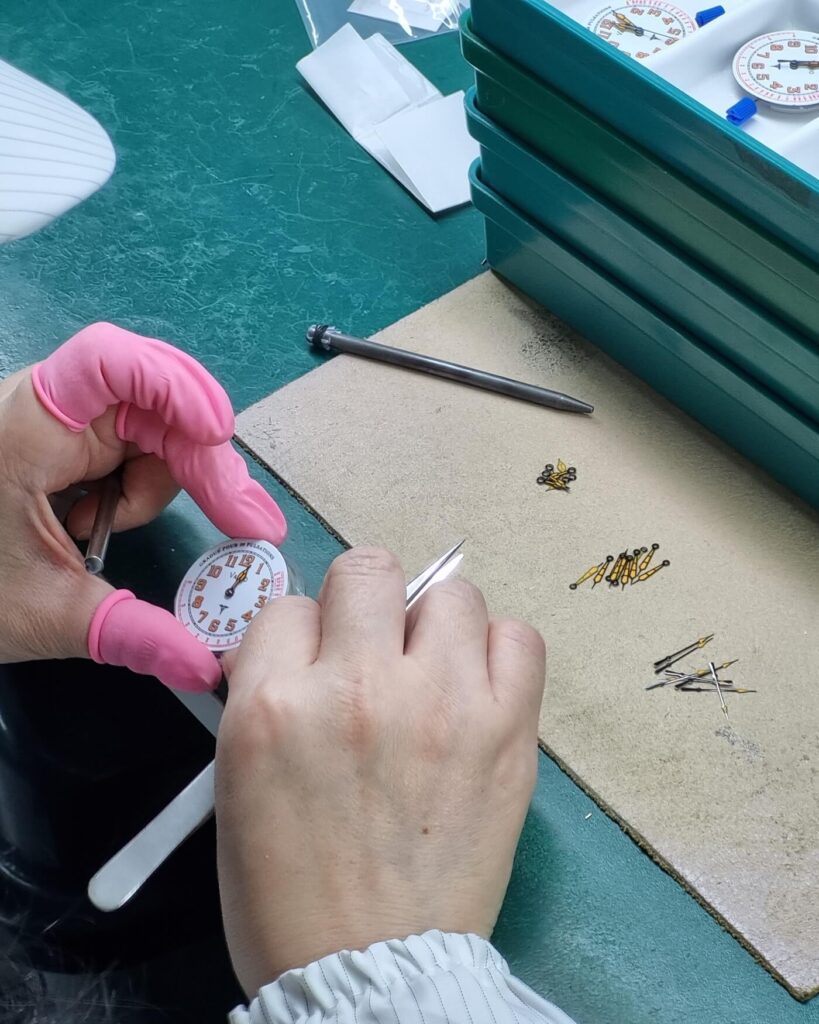
Your watches are inspired by the past, but are never simple homages: how do you approach to the creation of a new piece?
I think this ties into a new tagline I’ll be launching next year, for Vario’s 10th anniversary. For the longest time, our tagline has been “Wear your personality.” Next year, it’ll be “Time reimagined.”
A lot of my watches are inspired by medics and pilots. Take the trench series—the pulsometer, for example, was developed in the 1920s after the war. I ask myself, “What if medics had this in World War I? Could they have saved more lives?” Same with pilots—retrofits were made for aviation after the war. I imagine, “What if a pilot had an offset dial like this? Would it make reading the time easier?”
It’s that kind of imaginative thinking that helps me appreciate time—not just as minutes and seconds, but philosophically. It’s about understanding the possibilities each moment holds.
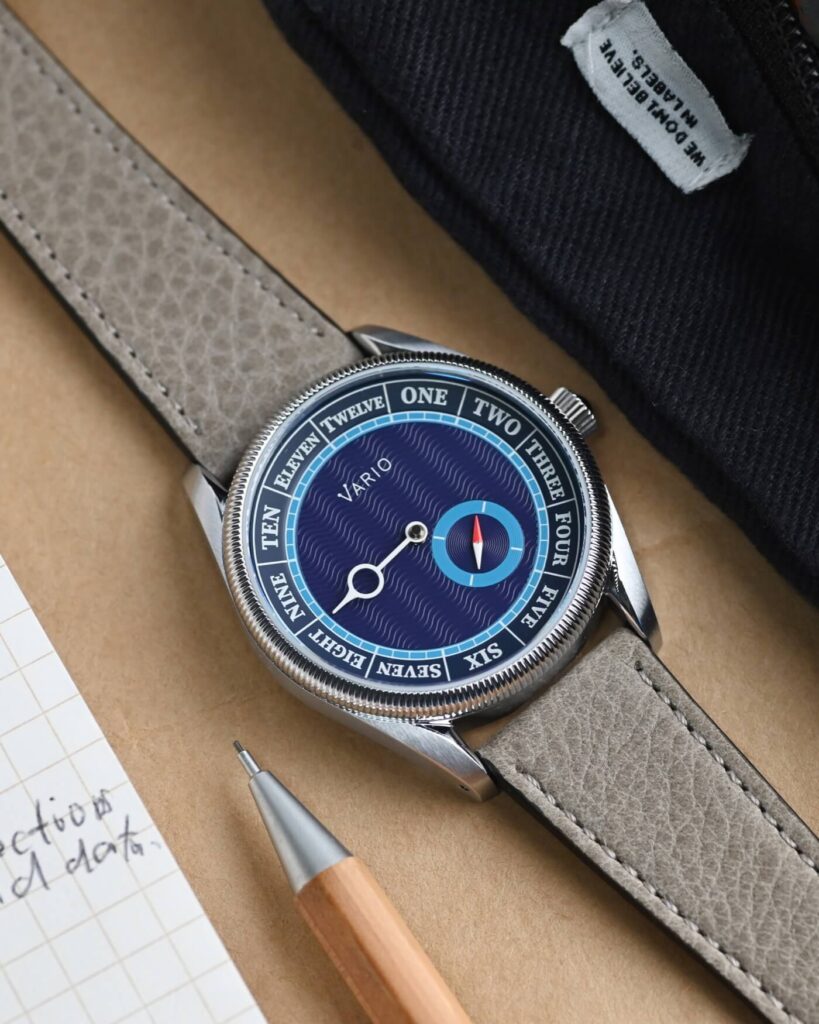
Can you walk us through your creative process for bringing a new Vario watch to life—from first idea to the moment it’s on someone’s wrist?
In the early days of Vario—probably the first five years—I was constantly on eBay, buying vintage watches under the excuse of “research.” I’d tell myself, this one looks interesting, let’s study it a bit more, and before I knew it, I’d built up quite a collection. That process of collecting and observing vintage pieces really shaped the way I approach design.
What I realized along the way is that I don’t like being boxed into a single genre. My first watch was Bauhaus-inspired, the second was Art Deco, then I shifted gears completely with a military trench watch. After that, I explored nautical themes with the Navy. For me, it’s about keeping things fresh—if I just stuck to dress watches, I’d get bored.
Usually, I’ll have several ideas floating in my head at once. Maybe something inspired by the 1950s, another by the 1970s, and maybe another Art Deco revival. I let them sit for a while, and over the months one of those ideas keeps resurfacing—it’s the one I can’t stop thinking about. That’s usually the sign it’s worth pursuing.
Once I commit, I dive into research. That’s honestly my favorite part. I’ll study the era, look at what defined those watches, and dig into details—why certain case shapes were popular, how dials were made, or how they achieved such thin cases with the technology of the time. A lot of those techniques aren’t used anymore, so it’s fascinating to learn how things were done back then and think about how to reinterpret them today.
Beyond its function, what does a watch represent to you on a personal level?
For me, watches carry a lot of emotional value. I still have a few of the watches my dad would buy me before starting a new school year; they may not be worth much, but every time I wear them, I’m reminded of those happy times—and that alone makes them special.
When I design vintage-inspired watches, that same sense of emotional connection is always present. I’ve collected many vintage watches over the years, and some of them have engravings on the back with the names of their previous owners. I often catch myself wondering—who wore this? What was their life like? In a way, it feels like role-playing when I design something like the Empire Art Deco watch. I imagine what it would have been like to wear it in the 1920s, what life looked like back then.
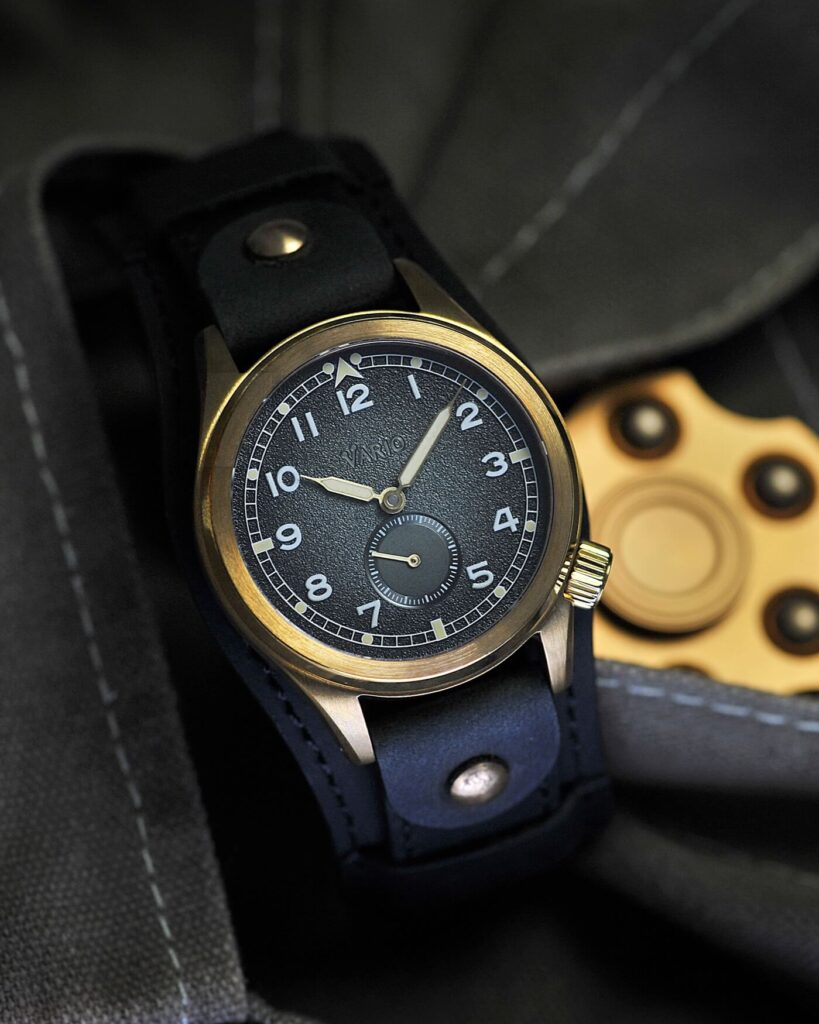
Back in March 2016, you launched your first colorful strap line via Indiegogo, raising over $7,500 from 119 backers. Over the past eight years, Vario has evolved from hobby strap maker to a respected micro watch brand. What have been some of the most defining moments in that journey?
The biggest turning point for me was actually very personal—having my wife Judy’s support. When I first started Vario, it was part-time. I wasn’t making enough to justify going all-in, but I could see the potential. I reached a crossroad where I had to choose between keeping it as a side project or committing fully. Judy never once told me to “get a real job,” even though we had a young child at the time. Instead, she encouraged me to do what I loved. That gave me the confidence to dedicate more time, energy, and resources to the brand—and eventually it paid off.
Another defining moment came a few years later, when the business grew to the point where Judy, who handled fulfillment, simply couldn’t keep up with orders. She was working 12 to 14 hours a day, and despite her efforts, it was overwhelming. I told her we needed to hire help, and at first she resisted—she wanted to manage it all herself. But after she reached her breaking point, I insisted we make the leap. That’s when we got our first office and started building a small team. Having that dedicated space felt like a real milestone—our own headquarters, proof to ourselves and to others that we were serious about growing Vario.
What’s the most interesting—or completely unexpected—feedback you’ve ever received from a customer, and how did it influence the way you think about your work?
I remember several, but the most memorable one was from an older gentleman about the Empire watch. He told me he had a similar watch when he was a boy, and it stuck with him all those years. Eventually, he bought one for his son as well.
I also get feedback from a wide range of customers—from people in their twenties to those in their sixties and seventies—which I really appreciate. Some of them are obsessed with a particular style, like Art Deco or trench watches. They often tell me things like, “I have the original trench, but it’s too fragile to wear, so I’m buying this one because I can actually use it.” Those kinds of comments are hugely satisfying—they remind me I’m creating something viable that people connect with emotionally.



